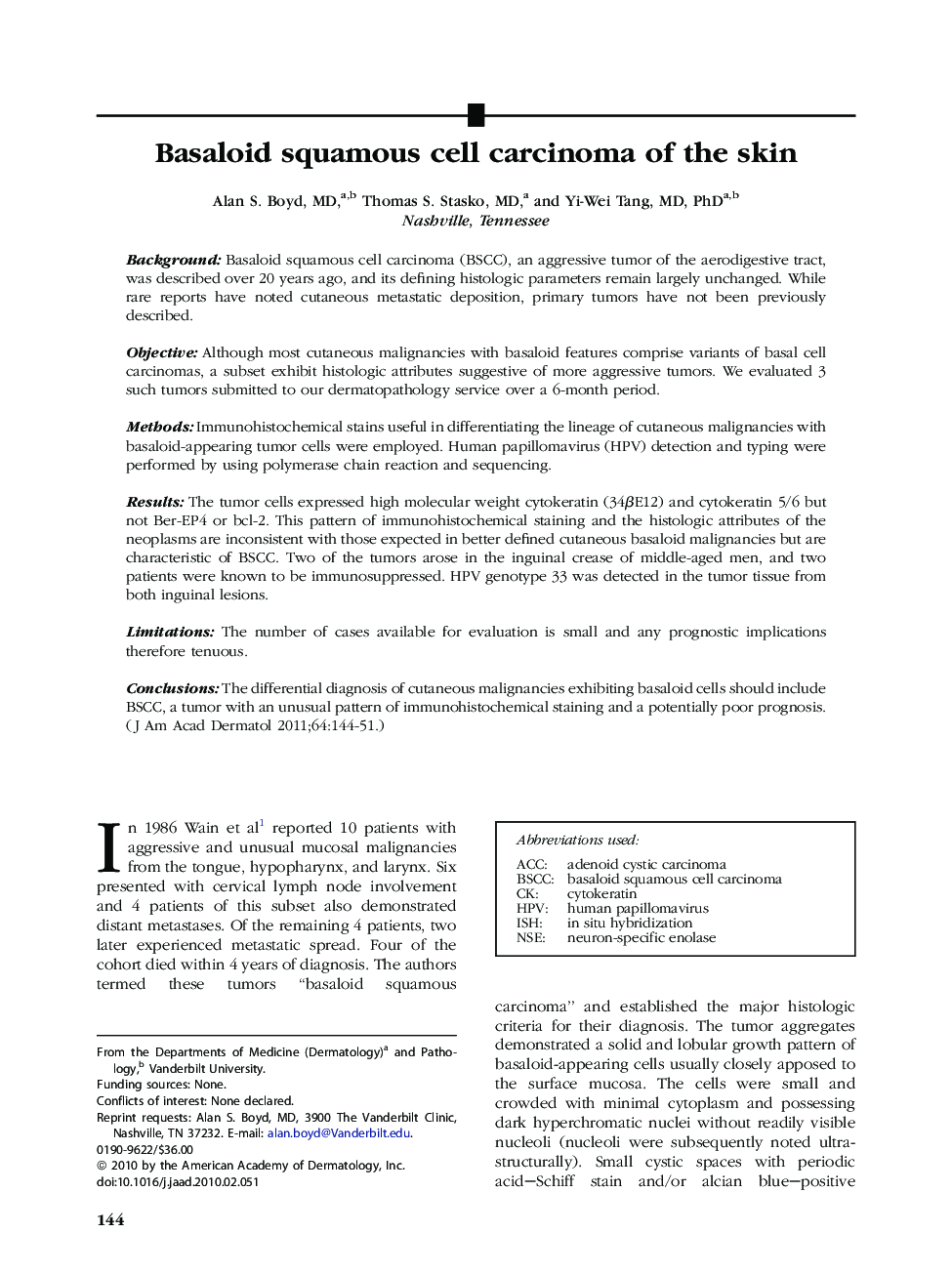| Article ID | Journal | Published Year | Pages | File Type |
|---|---|---|---|---|
| 3207932 | Journal of the American Academy of Dermatology | 2011 | 8 Pages |
BackgroundBasaloid squamous cell carcinoma (BSCC), an aggressive tumor of the aerodigestive tract, was described over 20 years ago, and its defining histologic parameters remain largely unchanged. While rare reports have noted cutaneous metastatic deposition, primary tumors have not been previously described.ObjectiveAlthough most cutaneous malignancies with basaloid features comprise variants of basal cell carcinomas, a subset exhibit histologic attributes suggestive of more aggressive tumors. We evaluated 3 such tumors submitted to our dermatopathology service over a 6-month period.MethodsImmunohistochemical stains useful in differentiating the lineage of cutaneous malignancies with basaloid-appearing tumor cells were employed. Human papillomavirus (HPV) detection and typing were performed by using polymerase chain reaction and sequencing.ResultsThe tumor cells expressed high molecular weight cytokeratin (34βE12) and cytokeratin 5/6 but not Ber-EP4 or bcl-2. This pattern of immunohistochemical staining and the histologic attributes of the neoplasms are inconsistent with those expected in better defined cutaneous basaloid malignancies but are characteristic of BSCC. Two of the tumors arose in the inguinal crease of middle-aged men, and two patients were known to be immunosuppressed. HPV genotype 33 was detected in the tumor tissue from both inguinal lesions.LimitationsThe number of cases available for evaluation is small and any prognostic implications therefore tenuous.ConclusionsThe differential diagnosis of cutaneous malignancies exhibiting basaloid cells should include BSCC, a tumor with an unusual pattern of immunohistochemical staining and a potentially poor prognosis.
